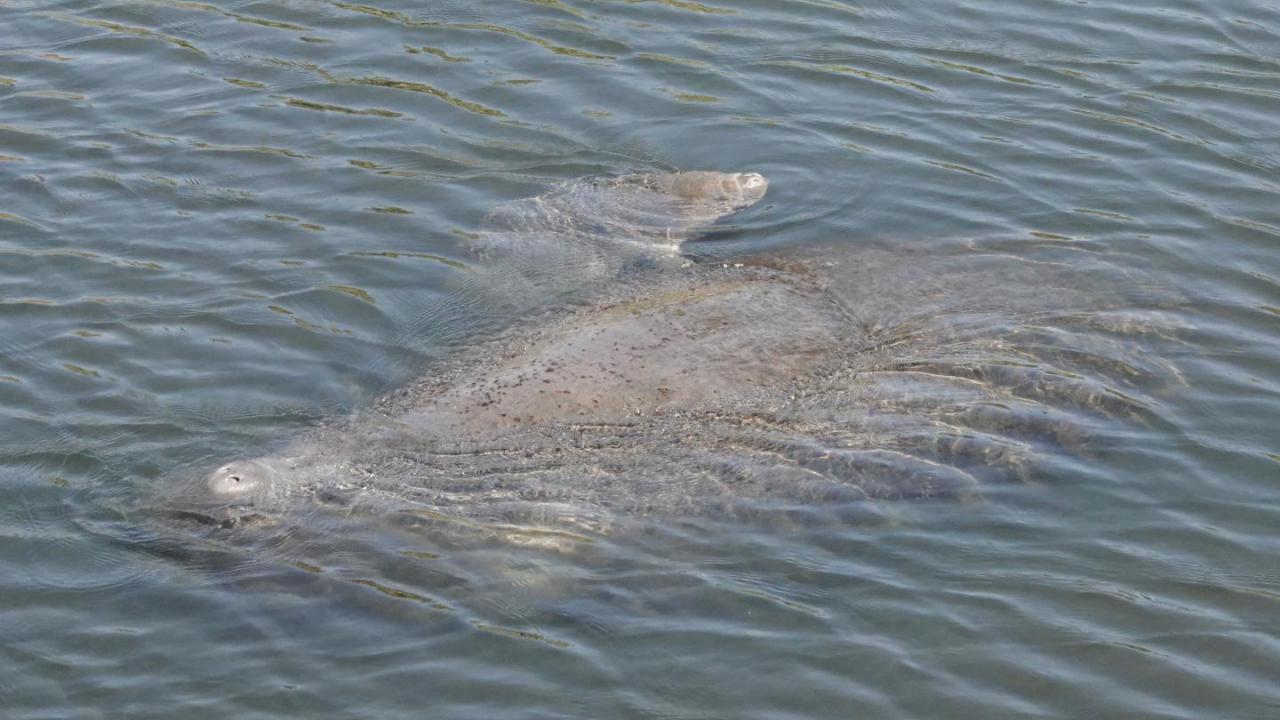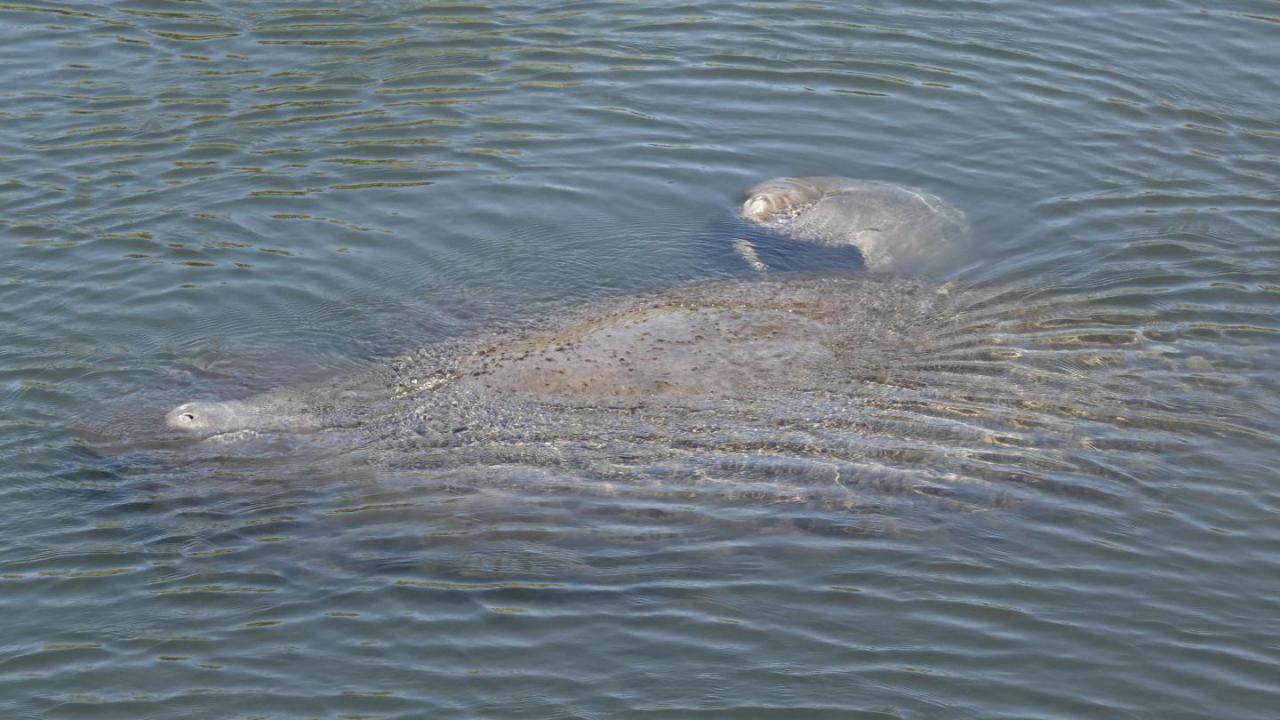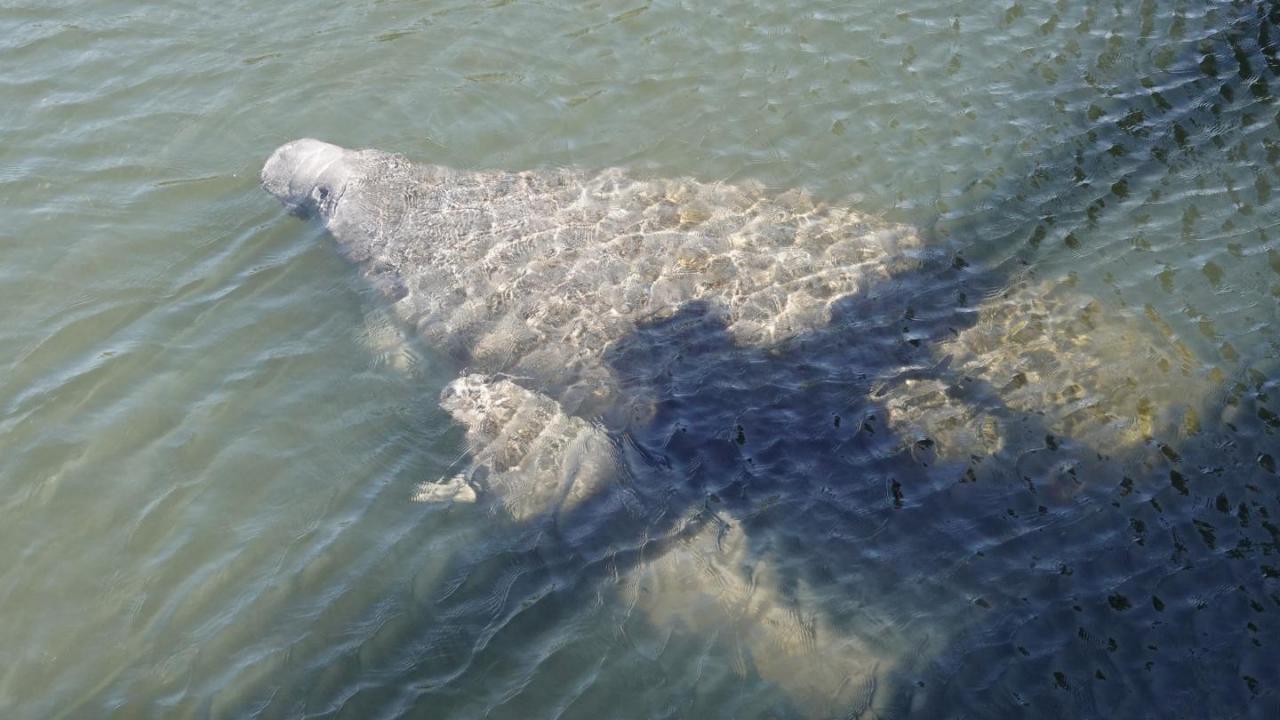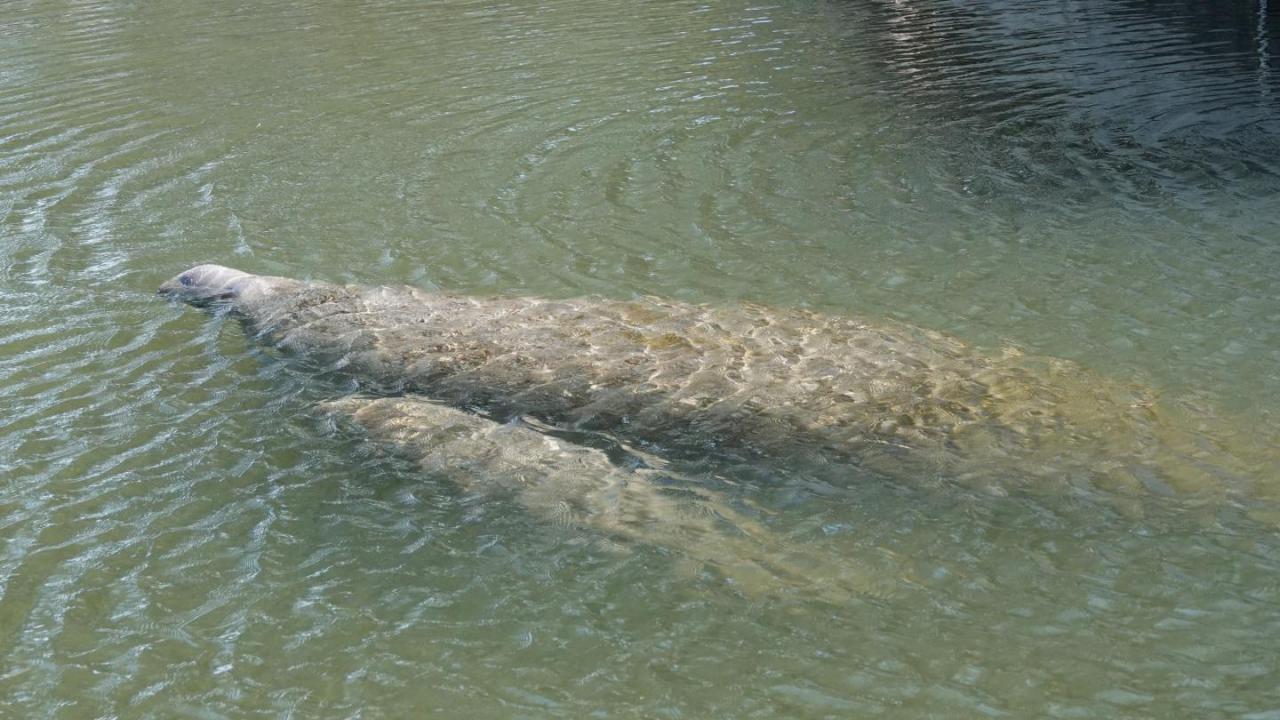Description:
The West Indian Manatee (Trichechus manatus) is one of three manatees (and one of four sea cows, along with the Dugong) alive today.
The other two species of manatees, the Amazonian Manatee (Trichechus inunguis) and the African Manatee (Trichechus senegalensis), are found in Brazil and in Africa.
The West Indian Manatee lives in warm waters of the western Atlantic Ocean, and in addition to spending most of its time in shallow coastal seas, it occasionally enters freshwater – particularly warm springs – where it spends some of the colder winter months.
West Indian Manatees weigh up to 1,200 pounds (544 kg) and reach about 10 feet (3 m) in length.
The West Indian Manatee, like all sea cows, is herbivorous.
It primarily grazes on sea grasses and therefore spends most of its time in sea grass beds.
It uses its thick, highly maneuverable lips to pull seagrass from the soft sediments in which it grows.
Adult West Indian Manatees have no natural predators, but juveniles may be eaten by large, coastal sharks.
There are two recognized subspecies of West Indian Manatees: the Florida Manatee (Trichechus manatus latirostris) and the Antillean Manatee (Trichechus manatus manatus).
Florida Manatee. Hillsborough River, Tampa, Florida, USA, 28 March 2022





